Abstract
Inhibition of thyrotropin (TSH) release by chronic treatment with small quantities of triiodothyronine (T3) and thyroxine (T4) was evaluated by determining the serum TSH response to thyrotropin-releasing hormone (TRH) in normal subjects and hypothyroid patients. Response to TRH was determined before treatment and after each dosage of a synthetic combination of T3 + T4 had been given for 3-4 wk.
Treatment of eight normal subjects with 15 μg T3 + 60 μg T4 reduced the maximum increase in serum TSH above baseline (maximum ΔTSH) by 76% in response to 400 μg TRH and by 87% in response to 25 μg TRH. The average serum T3 level during a 24 hr period in normal subjects who had been taking 15 μg T3 + 60 μg T4 for 3-4 wk was 129±10 ng/100 ml (mean ±SEM), well within the normal range, 70-150 ng/100 ml, although higher than the pretreatment level, 98±7 ng/100 ml. The average serum T4 level was unchanged from the pretreatment level. Treatment of the same subjects with 30 μg T3 + 120 μg T4 reduced the maximum ΔTSH further.
Six patients with primary hypothyroidism were treated, sequentially, with 15 + 60, 22.5 + 90, and 30 μg T3 + 120 μg T4. For each patient there was one increase in dosage of 7.5 μg T3 + 30 μg T4 which abruptly converted a maximum ΔTSH that was greater than, or at the upper limit of, normal to one that was subnormal. Concurrent with these six abrupt changes in TSH response, the mean serum T3 level increased only from 105±5 to 129±9 ng/100 ml, and the mean serum T4 level increased only from 4.9±0.8 to 6.3±0.5 μg/100 ml.
These data demonstrate the extreme sensitivity of TRH-induced TSH release to inhibition by the chronic administration of quantities of T3 + T4 which do not raise serum T3 and T4 levels above the normal ranges.
Full text
PDF
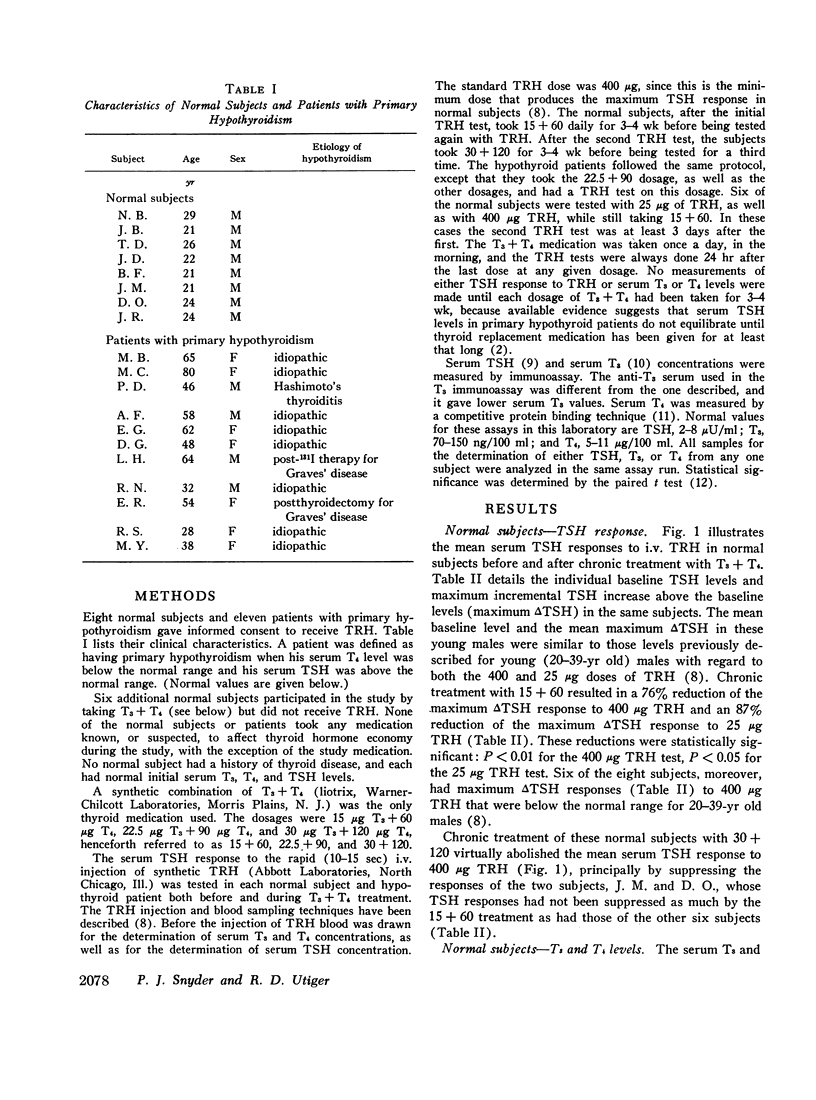

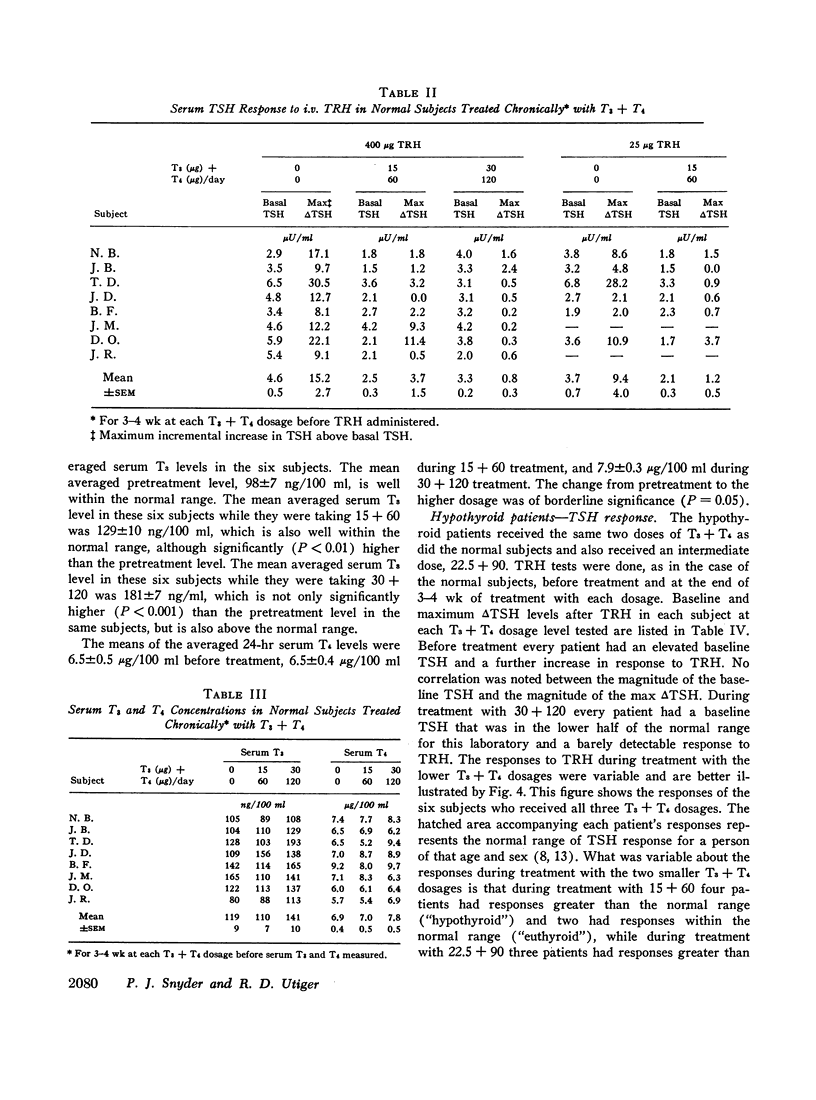
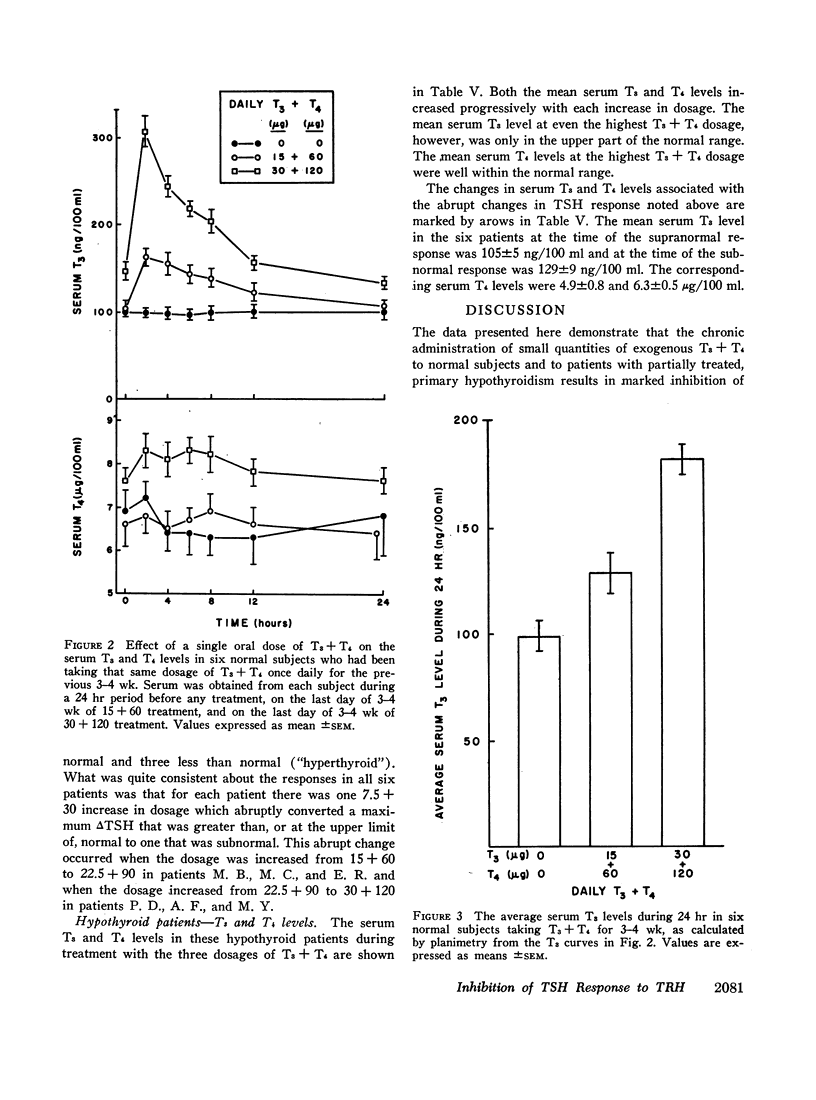
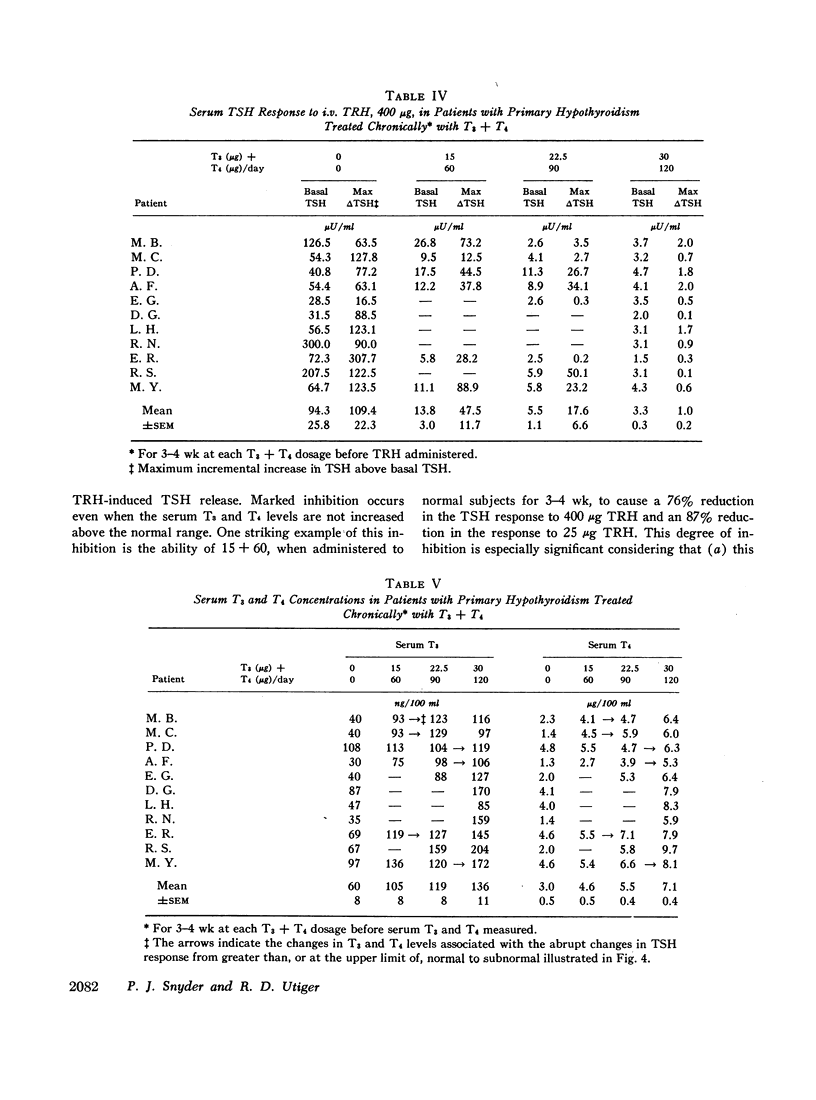
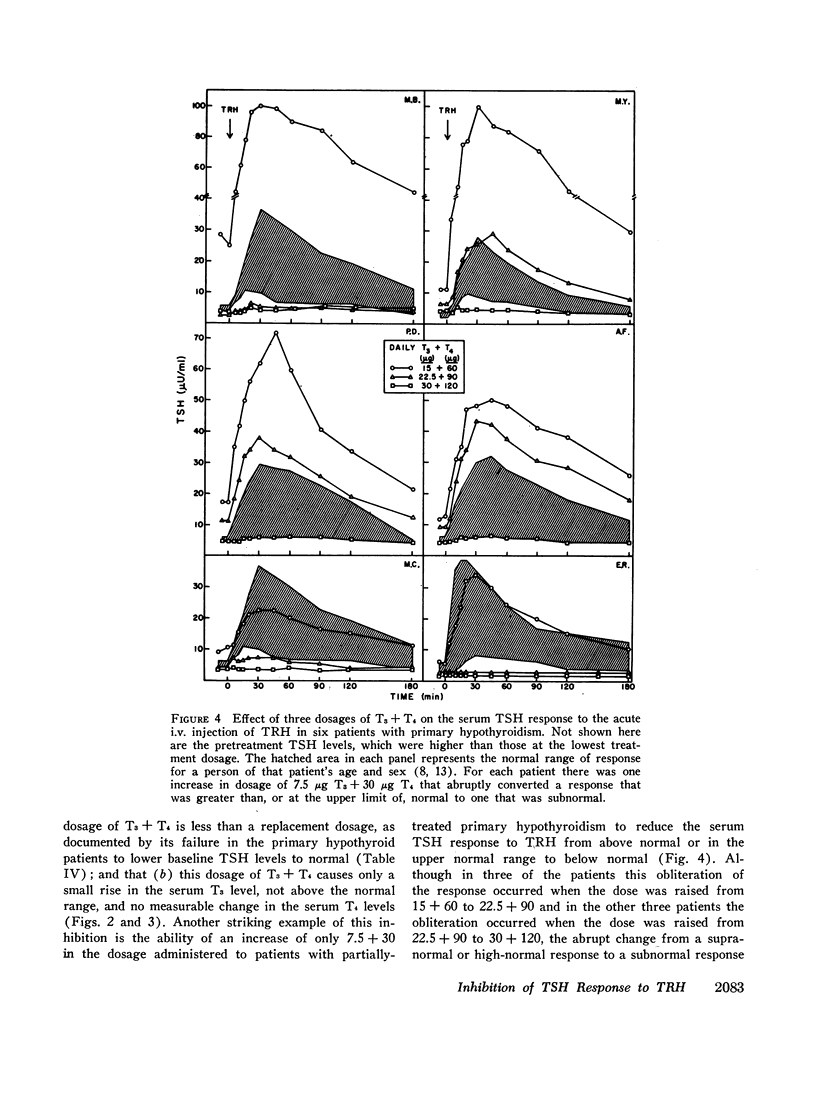
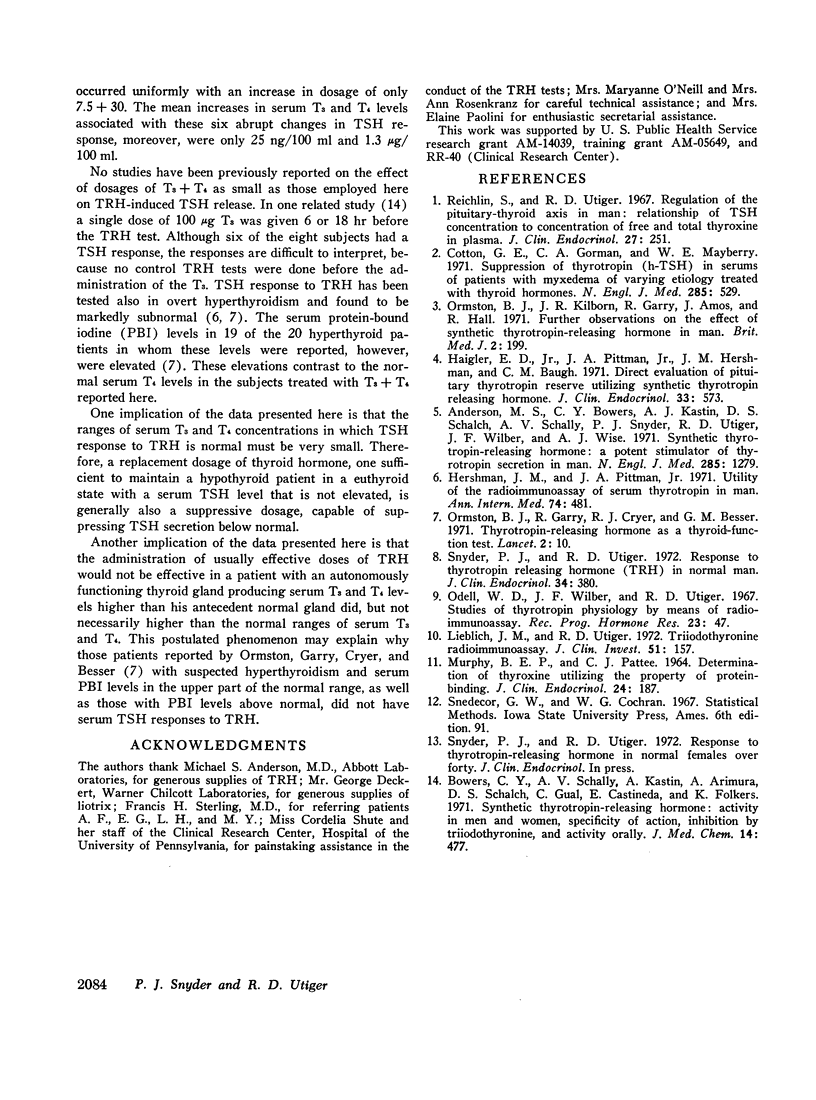
Selected References
These references are in PubMed. This may not be the complete list of references from this article.
- Anderson M. S., Bowers C. Y., Kastin A. J., Schalch D. S., Schally A. V., Snyder P. J., Utiger R. D., Wilber J. F., Wise A. J. Synthetic thyrotropin-releasing hormone. A potent stimulator of thyrotropin secretion in man. N Engl J Med. 1971 Dec 2;285(23):1279–1283. doi: 10.1056/NEJM197112022852302. [DOI] [PubMed] [Google Scholar]
- Bowers C. Y., Schally A. V., Kastin A., Arimura A., Schalch D. S., Gual C., Castineda E., Folkers K. Synthetic thyrotropin-releasing hormone. Activity in men and women, specificity of action, inhibition by triiodothyronine, and activity orally. J Med Chem. 1971 Jun;14(6):477–481. doi: 10.1021/jm00288a003. [DOI] [PubMed] [Google Scholar]
- Cotton G. E., Gorman C. A., Mayberry W. E. Suppression of thyrotropin (h-TSH) in serums of patients with myxedema of varying etiology treated with thyroid hormones. N Engl J Med. 1971 Sep 2;285(10):529–533. doi: 10.1056/NEJM197109022851001. [DOI] [PubMed] [Google Scholar]
- Haigler E. D., Jr, Pittman J. A., Jr, Hershman J. M., Baugh C. M. Direct evaluation of pituitary thyrotopin reserve utilizing synthetic thyrotopin releasing hormone. J Clin Endocrinol Metab. 1971 Oct;33(4):573–581. doi: 10.1210/jcem-33-4-573. [DOI] [PubMed] [Google Scholar]
- Hershman J. M., Pittman J. A., Jr Utility of the radioimmunoassay of serum thyrotrophin in man. Ann Intern Med. 1971 Apr;74(4):481–490. doi: 10.7326/0003-4819-74-4-481. [DOI] [PubMed] [Google Scholar]
- Lieblich J., Utiger R. D. Triiodothyronine radioimmunoassay. J Clin Invest. 1972 Jan;51(1):157–166. doi: 10.1172/JCI106786. [DOI] [PMC free article] [PubMed] [Google Scholar]
- MURPHY B. E., PATTEE C. J. DETERMINATION OF THYROXINE UTILIZING THE PROPERTY OF PROTEIN-BINDING. J Clin Endocrinol Metab. 1964 Feb;24:187–196. doi: 10.1210/jcem-24-2-187. [DOI] [PubMed] [Google Scholar]
- Odell W. D., Wilber J. F., Utiger R. D. Studies of thyrotropin physiology by means of radioimmunoassay. Recent Prog Horm Res. 1967;23:47–85. doi: 10.1016/b978-1-4831-9826-2.50005-2. [DOI] [PubMed] [Google Scholar]
- Ormston B. J., Cryer R. J., Garry R., Besser G. M., Hall R. Thyrotrophin-releasing hormone as a thyroid-function test. Lancet. 1971 Jul 3;2(7714):10–14. doi: 10.1016/s0140-6736(71)90005-5. [DOI] [PubMed] [Google Scholar]
- Ormston B. J., Kilborn J. R., Garry R., Amos J., Hall R. Further observations on the effect of synthetic thyrotropin-releasing hormone in man. Br Med J. 1971 Apr 24;2(5755):199–202. doi: 10.1136/bmj.2.5755.199. [DOI] [PMC free article] [PubMed] [Google Scholar]
- Reichlin S., Utiger R. D. Regulation of the pituitary-thyroid axis in man: relationship of TSH concentration to concentration of free and total thyroxine in plasma. J Clin Endocrinol Metab. 1967 Feb;27(2):251–255. doi: 10.1210/jcem-27-2-251. [DOI] [PubMed] [Google Scholar]
- Snyder P. J., Utiger R. D. Response to thyrotropin releasing hormone (TRH) in normal man. J Clin Endocrinol Metab. 1972 Feb;34(2):380–385. doi: 10.1210/jcem-34-2-380. [DOI] [PubMed] [Google Scholar]


